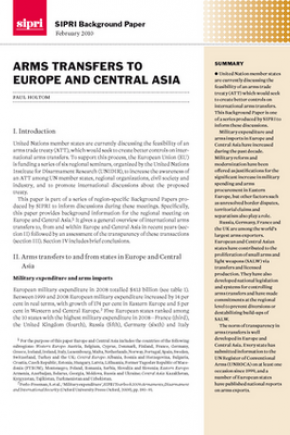Arms Transfers to Europe and Central Asia
Military expenditure and arms imports in Europe and Central Asia have increased during the past decade. Military reform and modernization have been offered as justifications for the significant increase in military spending and arms procurement in Eastern Europe, but other factors such as unresolved border disputes, territorial claims and separatism also play a role.
Russia, Germany, France and the UK are among the world’s largest arms exporters. European and Central Asian states have contributed to the proliferation of small arms and light weapons (SALW) via transfers and licensed production. They have also developed national legislation and systems for controlling arms transfers and have made commitments at the regional level to prevent diversions or destabilizing build-ups of SALW.
The norm of transparency in arms transfers is well developed in Europe and Central Asia. Every state has submitted information to the UN Register of Conventional Arms (UNROCA) on at least one occasion since 1999, and a number of European states have published national reports on arms exports.
I. Introduction
II. Arms transfers to and from states in Europe and Central Asia
III. Transparency in arms transfers
IV. Conclusions

